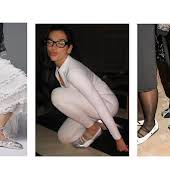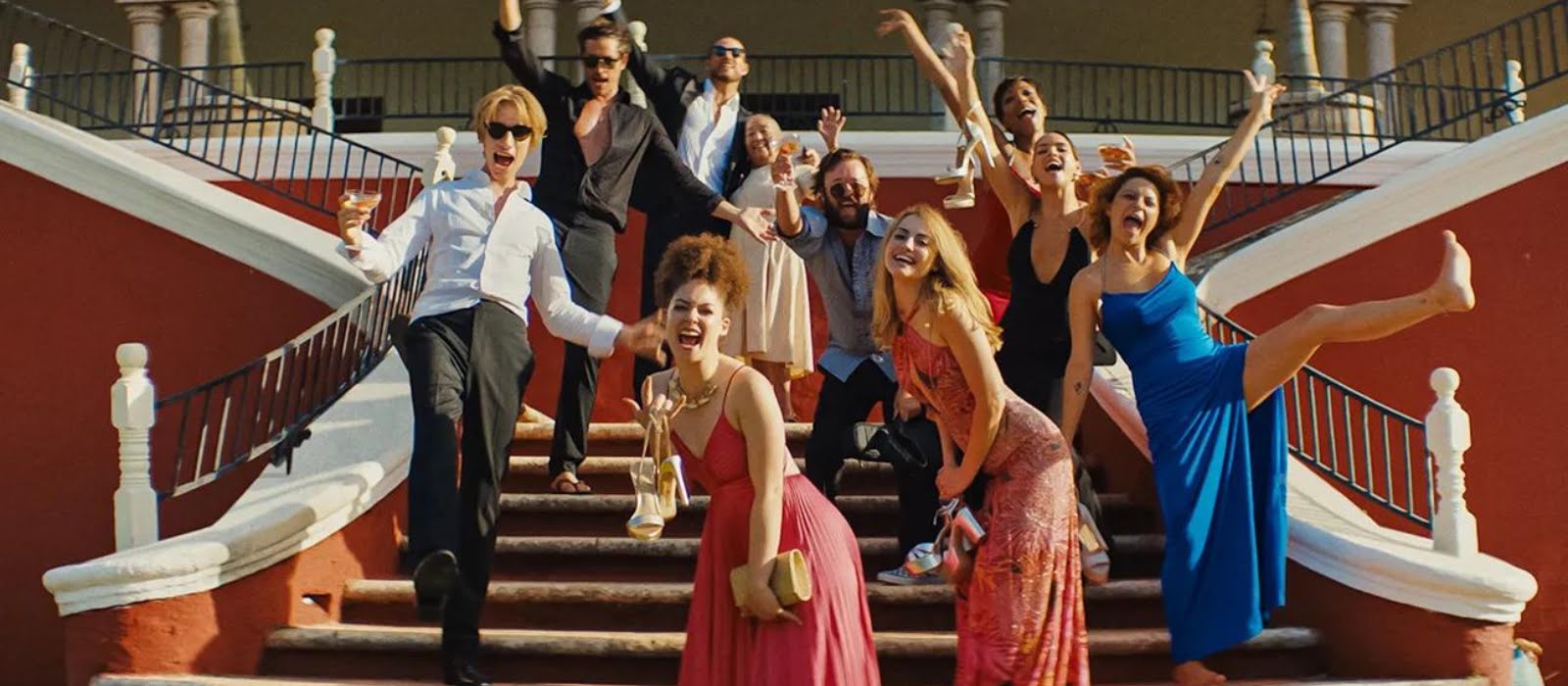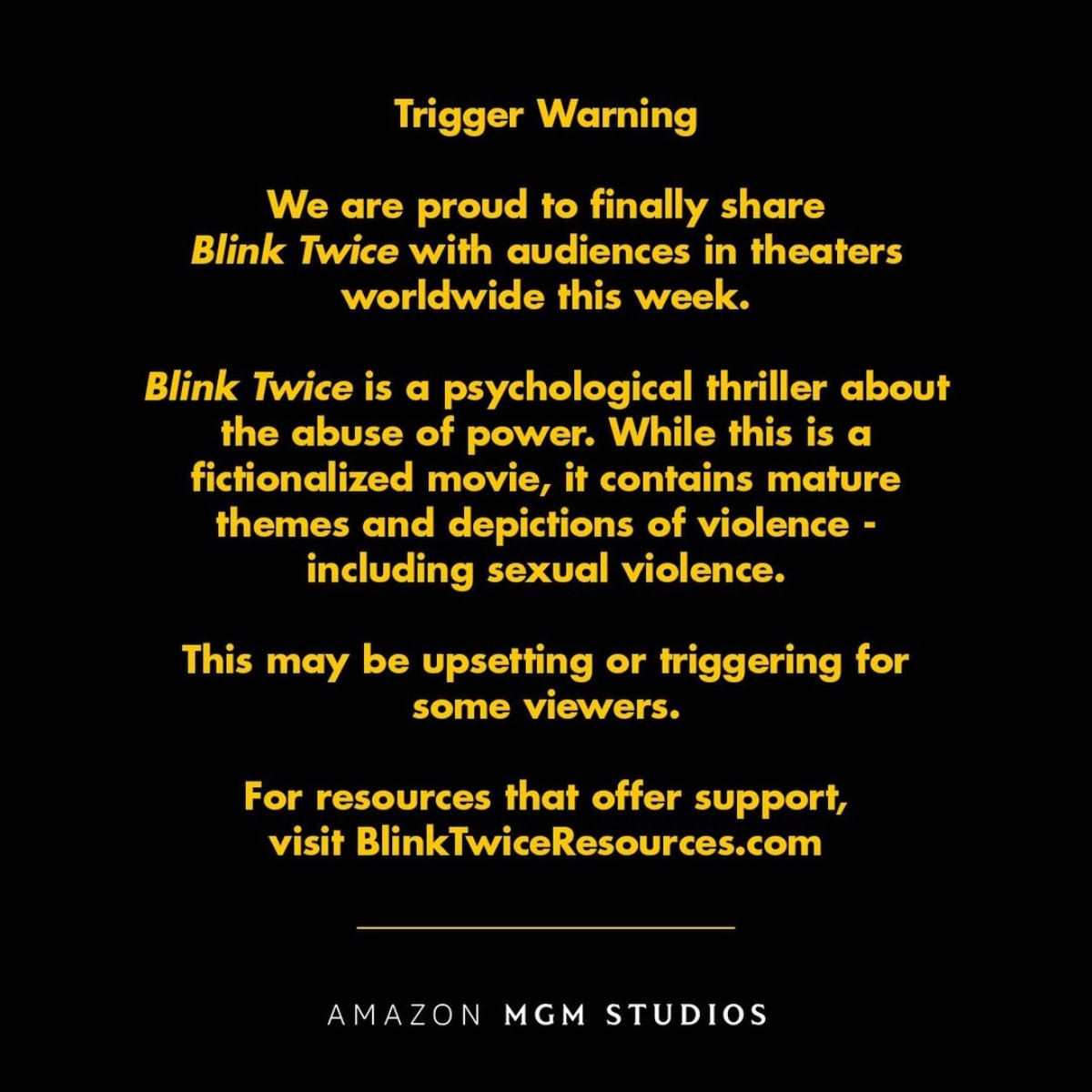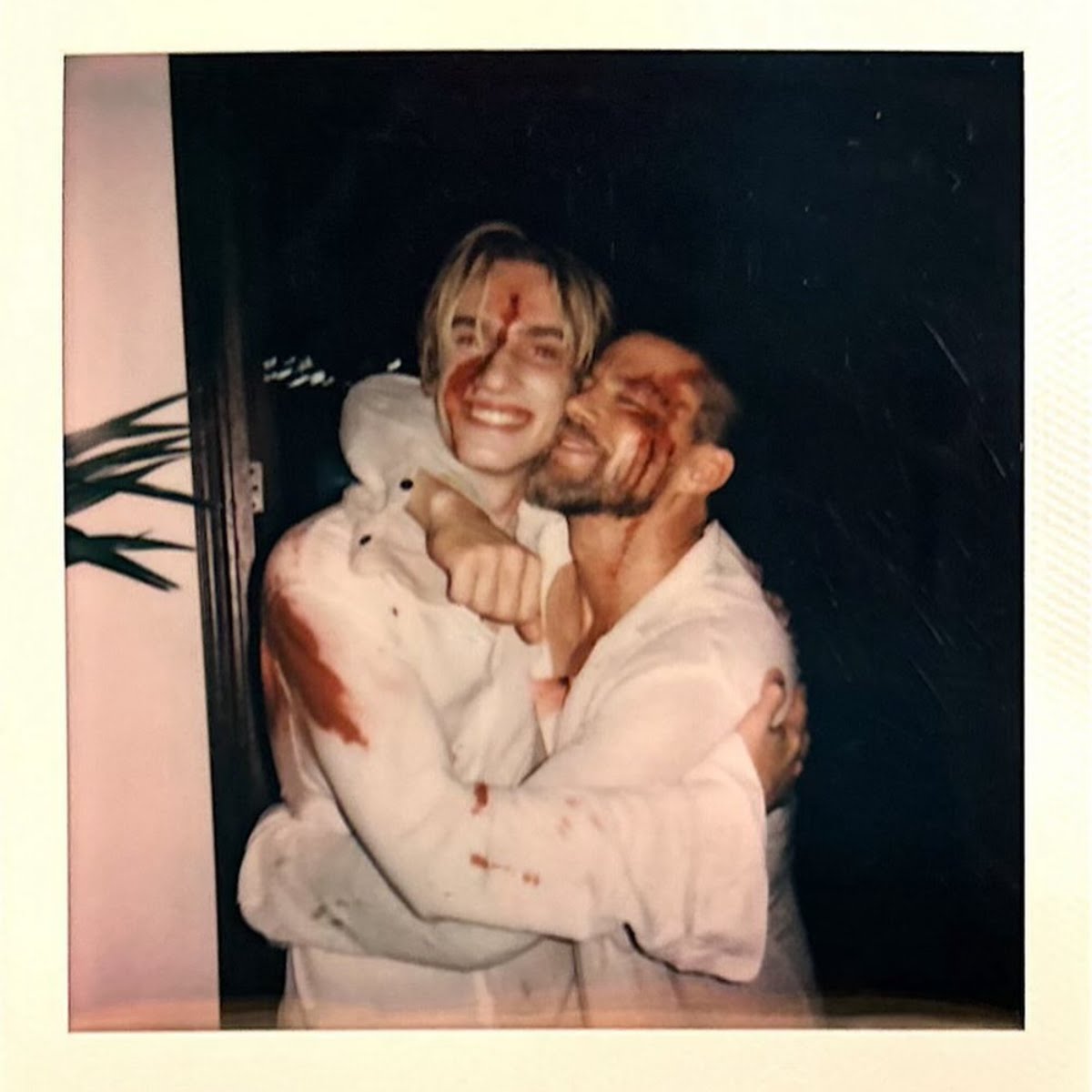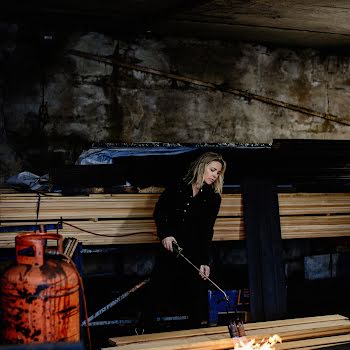Amazon MGM Studios
Blink Twice: Are scenes depicting violence against women essential or salacious?
New psychological thriller Blink Twice is getting some backlash online for its graphic depictions of assault on women, but in a movie about control, power and coercion, can we really expect cinema to be sanitised to such an extent?
This article contains spoilers.
Leaving the cinema screen speechless, only to sit in the car park for half an hour discussing what you just watched is, in my estimation, the signifier of a good psychological thriller. Being forced to watch YouTube explainers to make sure you fully understood everything, toying with what the metaphors and symbolism might mean, falling deep down the rabbit hole of the film’s world — this is the desired effect of the genre, and it’s something that Blink Twice absolutely achieves.
The directorial debut of Zoë Kravitz, Blink Twice stars Channing Tatum as tech billionaire Slater King in the aftermath of a never-explained cancellation. He issues a public apology, which could be the regurgitation of any briefly disgraced man who ‘takes accountability’ and promises to ‘look inward’, though no one quite knows how to hold them to it.
Naomi Ackie plays the role of our female lead, Frida, who finds herself drawn to the prowess of this powerful man. When the pair cross paths at a fundraising gala, she and her friend Jess are whisked away to King’s private island, which turns out to be a definitely-too-good-to-be-true pseudo-paradise.
The days blend together in a heady daze of lounging, eating and partying, but when bruises start to inexplicably appear and dirt is found beneath nails, Frida realises that something is amiss. During a conversation between Slater and Frida, they debate which is better: to face your trauma, or repress it, a theme which resurfaces again and again throughout the movie.
The film reaches its crescendo when Frida’s friend, Jess, is bitten by a snake and ‘mysteriously’ disappears. To sum up what’s happening is that each woman on the island is given a special perfume that drugs them, erasing their memories from the night, which is when the men violently rape and sexually assault them in a scene that left many viewers extremely shaken.
It is especially unsettling when Frida recalls Slater speaking to his therapist—who was earlier credited with helping the billionaire recover his repressed memories of childhood trauma—telling him that the worse they treat these women, the easier it will be for them to push down the memories.
It is fifty shades of messed up, and the scene evokes feelings of uneasiness, disgust, shock, and anger. It does what all good films are ought to: it elicits a reaction and makes the viewer feel something. Take Marina Abramovi?’s 1974 performance piece, In Rhythm 0, for example. The artist’s first durational work spanning six hours, Marina remained passive in front of a table containing 72 substances and objects ranging from water, honey and sugar, to scissors, knives and a gun with one bullet. Audience members were welcomed to interact with her in whatever way they chose. She was fed, kissed, stripped, cut and made to hold a loaded gun to her own neck. Even just thinking about it, it gives me chills.
The People of the Internet seem to disagree, taking to social media to air their grievance that the Blink Twice scene was unnecessary, gratuitous, and salacious. That its graphic nature only served to distress the audience, rather than further the plot, and to be perfectly honest, I just don’t agree.
Much of the conversation revolves around the trigger warning, which was issued on the film’s social media accounts in advance of its premiere, and again at the start of the film itself. Many believe it ‘didn’t go far enough’ in warning prospective viewers of what they could expect. It says that Blink Twice “is a psychological thriller about the abuse of power,” reminds viewers that it’s fictional, but contains “mature themes and depictions of violence — including sexual violence.”
Other Internet users argue that scenes of this nature normalise and desensitise viewers to acts of violence against women, and that screen violence has a proven effect on rates of real life violence. There are many films and television programmes that fall within this bracket, with lazy writing incorporating distressing arcs for female characters, just because, or unwarranted lengthy portrayals of the worst things imaginable for shock factor.
This was not the case with Blink Twice. This film is a highly stylised and dramatised account of very real-world issues faced by women. It is a commentary on power dynamics, coloured in no small part by the #MeToo movement and the horrors enacted by men like Jeffrey Epstein. The scene itself was brief, but its impact was razor sharp and enduring.
Already being boiled down into the tiring categories works by female directors are so often put into, Blink Twice has been referred to as a #MeToo thriller and a ‘female revenge fantasy’, which feel like quite reductive statements. No, this film is not without its plot holes or shortcomings, but it is a deeply affecting and incredibly well conceived portrayal of a subject we should all be facing head on.
Feature image via Amazon MGM Studios. Other imagery via @blinktwicemovie and @zoeisabellakravitz on Instagram
If you’ve been affected by sexual abuse, you can contact the Rape Crisis Centre National 24-Hour Helpline at 1800 778 888, at any time of day or night. They offer a free and confidential listening and support service for anyone who has been raped, sexually assaulted, sexually harassed or sexually abused at any time in their lives.
Alternatively, you can reach out to Women’s Aid on their free 24/7 National Helpline on 1800 341 900. It’s a safe, confidential and non-judgmental space to talk through what is happening at home and get practical support, including emergency safe accommodation. Or you can visit SafeIreland to find a local helpline.

